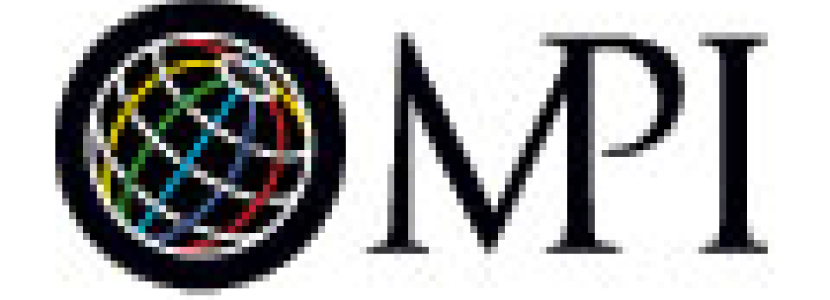
What great ideas are you missing that are within your grasp? If you knew the answer, you’d be a better innovator, marketer, investor and meeting professional.
In a world of chaos and change, there are a lot of opportunities. But most of us will fail to capitalize on the great ideas right in front of us.
After keynoting more than 300 events, I’ve seen hundreds of different approaches by hundreds of meeting planners. I’ve seen dozens of event structures, countless ways to market an event and unexpected strategies that led to meeting success. Over the last few years, following my keynote for MPI’s World Education Congress, I’ve been plagued by one particular curiosity: Why do smart people tend to miss out on their full potential?
The answer will be deeply explored in my book BETTER & FASTER, but right now I want to teach you to overcome the neurological traps that block successful people from realizing that potential, based on insights learned by studying roughly 250,000 ideas using our Trendhunter.com audience of 100 million people.
Maybe the idea you are overlooking is a new way to get people to your event, or a different structure or a type of partnership that could change your entire event.
You might be missing out on a great learning agenda, a particular topic or added extras that your speaker could be creating for your attendees. But how do you figure out what you’re missing?
Smart and successful people are the ones most likely to miss out. That might seem painful to hear for a veteran meeting professional, but the reality is that success always fuels complacency, which reduces our ability to see the great ideas right in front of us.
BlackBerry popularized the smartphone. They were the market leaders, and we were all addicted to our “crackberries,” but somehow they missed the whole wave of consumer phones. Blockbuster was one of the most successful franchisers of all time. They pioneered new rental models but passed on three chances to buy Netflix for US$50 million.
Kodak invented the digital camera in 1976 and even made a website in the 1990s where you could upload pictures to share with your friends, but they failed to capitalize on the true potential of their creation.
These companies were not run by monkeys, so why did they miss out? My theory is that after 10,000 years of evolution as farmers, we are prewired with a series of traps to make us better farmers. Once we find our field of opportunity, we repeat and optimize all the decisions that led to last year’s harvest.
That served us well for thousands of years, but it doesn’t help us adapt to change in an Internet-connected world. Specifically, the three traps of a farmer are as follows.
1. Complacency. Once we achieve success, we lose that hunger we had when we were first out of school. Why bother pushing harder if things are already working out well? It might seem like you don’t need to change, but inaction opens the door for competitors to come in and eat your lunch.
2. Repetition. At first, it seems safe to make your event as good as last year by doing everything exactly the same. But competitors are trying different structures, marketing tactics, partnership plans, sponsorship ideas and methods for making meetings more interactive.
They are testing social media in new ways, offering different pricing structures and leveraging speakers in ways you might not have thought possible. If you want to grow (and not shrink), you need to push your creativity.
3. Protectiveness. It is natural to become territorial. It might be that you resist inviting competitors, or that you don’t want to outsource to a partner, but in general, we try to set up walls to protect everything that we’ve created. Barriers to entry might fend off a competitor, but they also anchor your thinking and become traps that bind you to certain decisions and status quo. To break free from the traps of a farmer, you need to awaken your inner hunter.
Before a big keynote, the CEO of a global insurance company put it to me like this: "Jeremy, our brand is like a lion. We used to be hungry and we used to fight, and all of that led us to become king of our land. But now that we have that land, we’re just sleeping under a tree. People come to work and they are just doing what happened before them. And now, as we sleep under the tree, the hyenas are coming up to us and they’re scratching us while we sleep. They’re testing us. They’re scavenging in our land and they’re eating our meal. But we’re the lion! We need to stand up and roar!"
The point is that we lose some of our hunger once we become successful, and the way out is to awaken your inner hunter. To do that, you need to be more conscious of how and when the three traps of the farmer are sinking in, and you must push yourself to overcome the setbacks of success.
More specifically, you need to fight complacency by fueling your own insatiability. You need to break free from repetition by enabling creative experimentation. And you need to fight protectiveness by increasing your comfort with change and adaptation.
As you embark upon a new meeting season and evaluate your strategies, never forget that you’re a lion and that you need to awaken your inner hunter, to stand up and to roar.
Jeremy is a speaker, an innovation expert, an award-winning author and founder of Trendhunter.com, a trend-spotting website with more than 2 billion page views and 3 million fans. Previously, Jeremy grew a $1 billion portfolio for Capital One, and today more than 300 brands such as Coca-Cola and Sony rely on his expertise. Learn more at www.JeremyGutsche.com.




